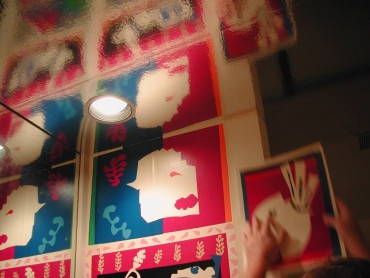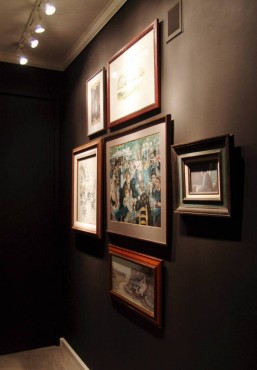
Navigating interior design options is challenging. Where do you start when so many options are available? Here are some basic tips for your walls and ceilings. Read part 1 of this article to learn about floors.
Walls: Paint
Most manufacturers have reformulated their paints, claiming to have reduced the toxic ingredients. That is probably true. It is also possible that many are doing it to be in line with whatever new trend seems to be in vogue.
The result of these new, low-toxicity formulations is a higher price and the need to work a little harder to get good results. A professional painter with more than 30 years of experience told me that many of the new formulas make it very difficult to get the paint to level out. He claimed that it was impossible to not show roller marks or brush strokes.
For that reason, we specify paints that are as close to the original formulation as possible. One specific paint that we prefer to use is Benjamin Moore’s Regal Select Flat. It is also possible to get Regal Select in some low sheens.
We mostly use no more gloss than eggshell. Designers like the look of flat and it tends to be more forgiving of surface imperfections. Simple as that.
A few years ago, we learned the hard way that all new formulas are not better.
It was a new-formula paint we had chosen for trim around doors and windows. The painter, who had worked with us since we first opened shop in Winslow in 1974, prepared the surfaces the correct and traditional way. After the new paint had cured for a full week, the client taped Christmas cards to some of the doors.
After Christmas, when she removed the tape, the new paint surface came off right along with the tape. The painter had to redo the job from the beginning, and this time we chose the original paint formulation.
For a long and dark hallway, a light-colored wall is what most people would request, but you can produce a stunning result if you do just the opposite. Paint the walls a very rich and very dark color, such as a brown-black in a flat finish. Then add lots of bright artwork, especially oil or acrylic paintings or fabrics. Watercolors are usually too subtle.
If you have a center ceiling light, take that out and replace it with track lighting holding about a dozen miniature spotlights. The effect will be dazzling. Use LEDs or incandescent spots but not halogen. Halogen spots are simply too hot and can soften oil-on-canvas if just a few feet away.
 Wallcoverings
Wallcoverings
In the 1960s, ’70s and ’80s, we papered many walls in most houses, just as designers had done a hundred years earlier and before. In powder rooms or bathrooms, we used vinyl or vinyl-coated papers. A well-known local company called Fred Cole Arts used grocery bag papers, about 2 feet wide, and then silk-screened fabulous textures and designs on those large sheets.
Wallcoverings are not in vogue right now but come into and out of fashion periodically. Wait ’till 2020, they’ll be back.
One very effective treatment using wallcovering is to cover every wall in a powder room with a rich and deep-colored material. In one home, we used the client’s Matisse prints and installed them in panels on the walls. We then covered the ceiling in high-gloss mylar. It’s almost like a mirror but the reflections are slightly diffused and create the feeling of having a two-story high ceiling.
Ceilings
As mentioned in the previous paragraph, covering the ceiling in a reflective mylar works very well if the walls have a material that is rich in color and rich in design. It is best to limit this to small areas — powder rooms, bathrooms or narrow hallways.
If you’ll be painting ceilings in an off-white, add 1/4 of the wall color to any of the typical ceiling whites such as bone, alabaster or even Ivory. This will allow the lighter ceiling color to blend in with the wall color, resulting in a room that feels more unified.
In many cases, however, we prefer to paint walls and ceilings in the same color, even when dark.
In fact, especially when dark. This treatment works well in smaller rooms that are used as retreats, such as a master bedroom, media room or home office.
An excellent color choice for this is the very dark Benjamin Moore HC-77 Alexandria Beige. For a somewhat lighter version, Benjamin Moore HC-80 Bleeker Beige is an excellent choice because it is a neutral background for any other colors in your furnishings or any woods, not fighting with either green or red tones.
You will, however, need to bring more light into a dark room. Most rooms should have three or more light sources, especially table lamps or floor lamps.
If practical, have recessed ceiling spotlights installed near bookcases or walls that have most of your artwork. Leave the typical center-mounted ceiling light off except for vacuuming. A room lit by light at your level is best for reading and creates a warm and friendly — inviting — atmosphere.



























